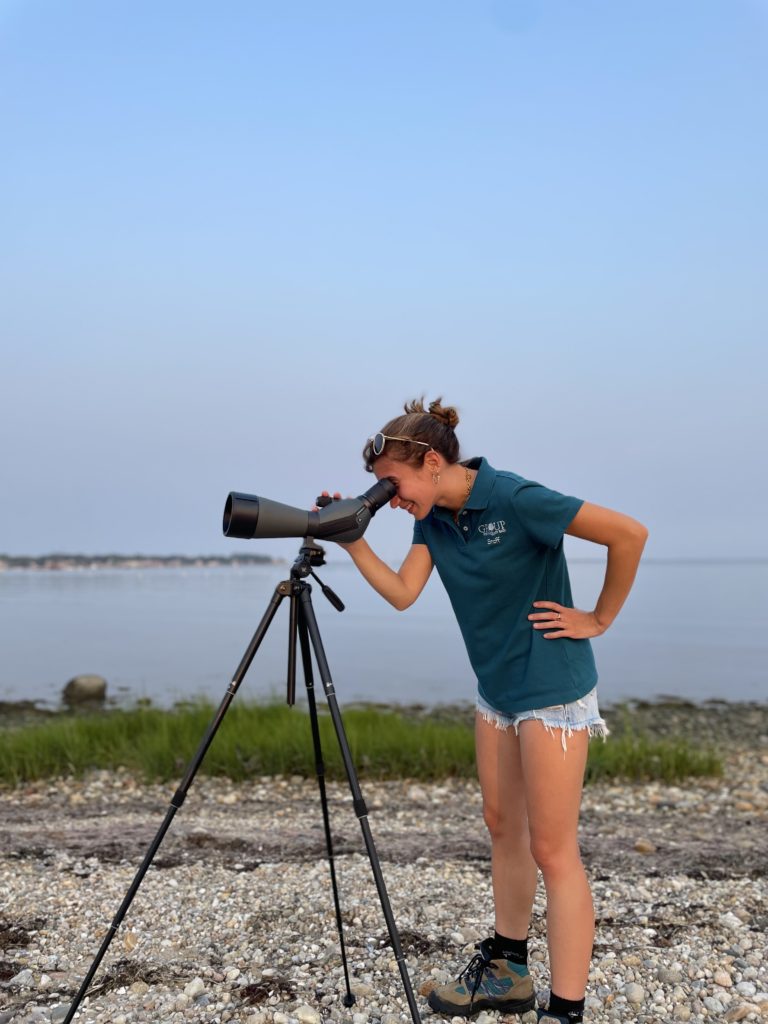New study finds osprey population is ‘thriving’ on the East End

The sight of ospreys soaring overhead, returning to their nests and plunging into local waters to pluck out a fish are such a sure sign of spring on the North Fork that it’s difficult to imagine a time when spotting the apex predators was considered a rarity.
For the once-endangered species, their now-thriving population numbers are part of an environmental success story decades in the making.
According to a newly released report by the Group for the East End, the number of active osprey nests has increased well over 200% since their monitoring efforts began in 2014.
“The current osprey population is thriving,” Group for the East End environmental education director Steve Biasetti said in a statement. “While it continues to be our collective responsibility to be vigilant environmental stewards, I confidently assert that the osprey population has made a full recovery on eastern Long Island.”
This past season, the environmental group monitored hundreds of active nests across the five East End towns, documenting 466 active nesting pairs, which produced approximately 585 fledglings.
Southold was among the most active locations on the East End, with 162 of 223 monitored sites demonstrating activity and 230 fledglings counted. On Shelter Island, staff and volunteers monitored 71 sites, 57 of which showed activity and produced 79 fledglings. In Riverhead, 13 of 23 sites were active, resulting in 19 fledglings.
By comparison, monitoring efforts in 2014 identified just 199 active nests.
GFEE officials said that while improved monitoring efforts have helped identify nests that may have been overlooked in prior years, there is “no doubt” that the number of active nests has increased in recent years.
To conduct their research, GFEE partnered with multiple agencies including The Nature Conservancy, Eastern Long Island Audubon, North Fork Audubon as well as the Seatuck Environmental Association.
Populations of the white-bellied predators declined dramatically between the 1950s and ’70s as the use of the insecticide known as DDT increased.
Intended to curb mosquitoes, the chemical set ospreys on a path toward extinction as it passed through the food chain and resulted in egg thinning, causing them to be crushed during incubation.
Destruction of wetland and nesting habitats as well as overfishing also contributed to their near demise and scientists credit a mix of factors — all changes in human behavior — as reasons for their comeback, which began once the EPA banned the use of DDT in 1972 and stricter fishing regulations, especially on bunker, were enacted.

“By the late 1980s, [GFEE] was actively assisting in osprey recovery by erecting artificial osprey nesting platforms in appropriate locations, an activity we continued to varying degrees over the following three decades,” Mr. Biasetti said. In the last 30 years, the organization has worked alongside other conservation groups, municipalities and residents to install more than 250 osprey nesting platforms as an alternative to docks, chimneys, light and utility poles, all of which can be dangerous nesting spots for the birds.
It’s also led to a somewhat unlikely conservation partnership with PSEG Long Island, which works with the nonprofit to identify problematic nest sites and safely move them. Though nests perched high on utility poles have become common, ospreys’ frequent contact with water on electrified lines can spark fires or lead to electrocution.
In addition to installing nesting platforms, the utility’s osprey conservation team also pioneered a physical deterrent that can be placed over electrical infrastructure to discourage new nests in dangerous areas.
Along with a neighbor, Adam Irving helped call attention to a dangerous nest situation near the Crab Shack in Orient last spring.
In an interview last Tuesday, Mr. Irving said PSEG responded and installed a plastic barrier to prevent future nests and installed a nesting platform nearby, which allowed a successful fledgling over the summer.
“At first you could see the mom just sitting on the egg for hours,” Mr. Irving said, detailing how he, his wife and two children would frequently observe the nest with binoculars. “We could see the mom taking parts of the fish and feeding it to a little head and mouth that popped up, then it starts peering over the edge and eventually takes its first steps and learns how to fly. That was very cool to see up close.”
Officials at PSEG say the partnership has been beneficial and has plans to continue identifying hazardous nests and installing additional deterrents ahead of the birds returning in spring 2022.
“This partnership has enabled us to quickly identify and remediate dangerous situations and work on long-term planning that will protect both the osprey and the electric system,” Daniel Eichhorn, president of PSEG Long Island, said in a statement.
While no longer a threatened species, ospreys are still considered a “species of special concern,” by the state Department of Environmental Conservation.
The group is planning to leverage technology in order to increase public awareness and manage conflicts that can emerge due to their close proximity to humans along the shoreline.
Madison Hrysko, an environmental associate for the group, has been helping to compile data that maps where ospreys’ nests are located and tracks their success.
“This year, we have begun using geographic mapping technology compiling a regional interactive map; these maps can be used to compare where they have historically nested, keep inventory of existing osprey poles, and help to gauge their success on Long Island, and share more accurate information with the public and integrate the monitoring data collected by other conservation organizations across Long Island,” she said.
Environmental associate Marina DeLuca said a new website is also being developed to provide members of the public with information about the local osprey population that will include tips for avoiding conflicts, understanding behaviors, promoting osprey conservation, and providing safe nesting opportunities for what she said are “magnificent” birds.








